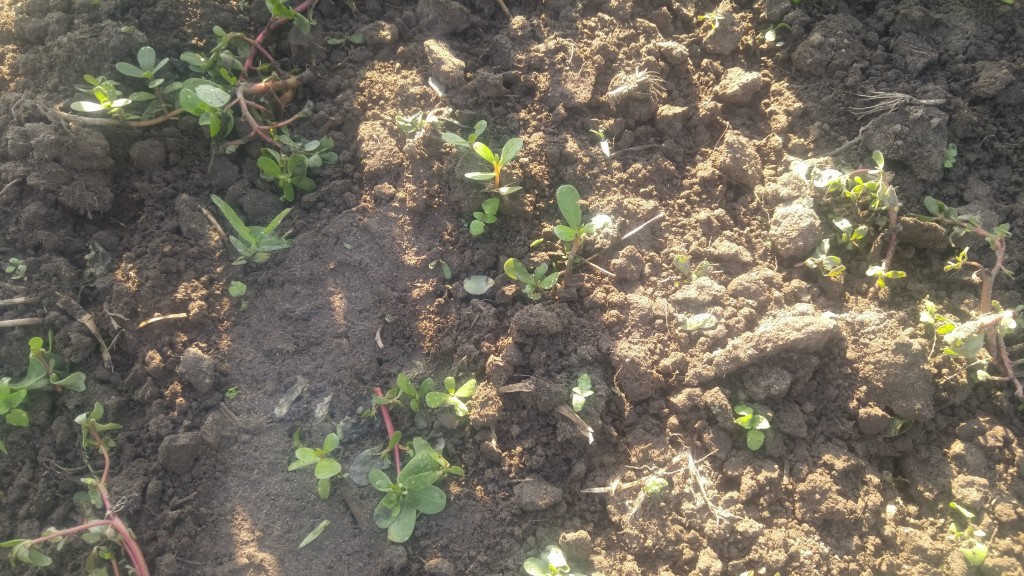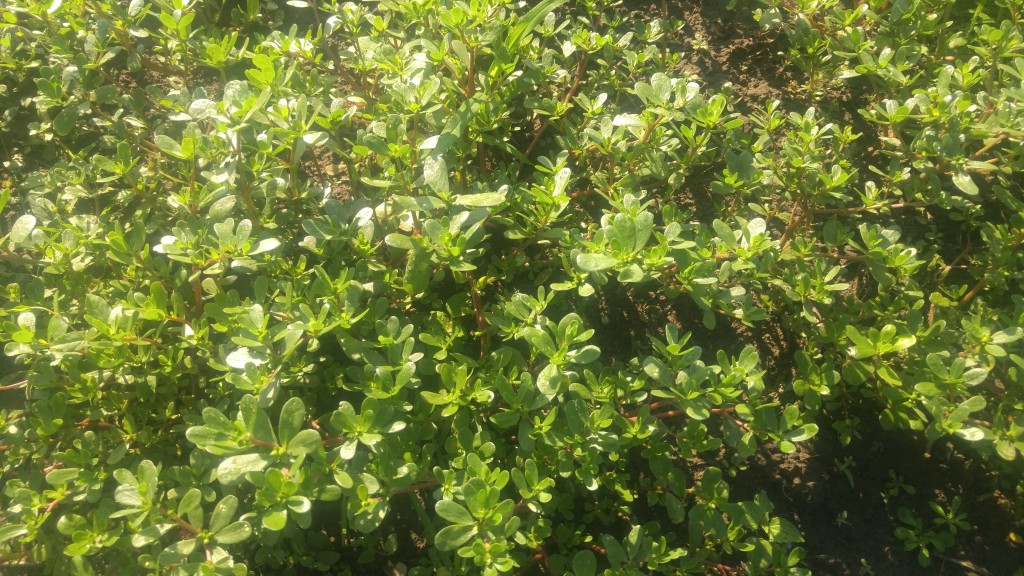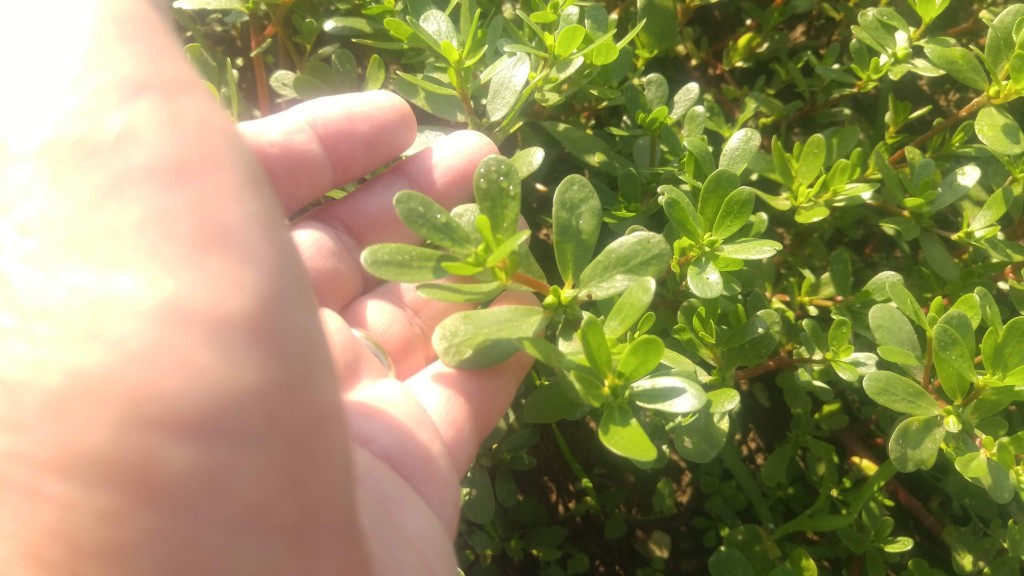Returning to one of my gardens after being away for a week, I noticed there were a lot of weeds that had spread over the garden. I thoroughly hoed the garden before I went away the previous week but I didn’t have time to rake up the cut and dislodged weed stalks. Usually the hot August sun is enough to dry them up and finish them off. There were a couple of good thunderstorms that rolled through during my absence that dropped enough rain to keep the weed stalks moist.
Most of the weeds that got cut off by hoeing did die despite the rain. One notable exception was the purslane. It was present in fairly high numbers and the plants were small, but they did get hoed.
Purslane has succulent leaves that resist drought and desiccation. Small pieces of stems can take root and grow into full size plants. It also has a central taproot that, if cut but not removed, can rapidly regrow.
In one area the purslane formed a nice mat devoid of other weeds. In that spot the other weeds died from the hoeing while the purslane was able to reestablish itself taking up all available growing space.
Purslane does not compete very much with most vegetable crops for water and nutrients. There has been some thought by researchers about the possibility of using purslane as an alternative to herbicides for some food crops. Because it is low growing and can form a dense mat, it is able to reduce the number of more aggressive weeds from getting started. I’m not inclined to experiment with that this year but I may devote a small plot next year to a purslane companion plant trial. Let me know in the comments if that would be something you’d like to see.
Purslane is considered a wholesome food in many cultures around the world. It was brought to this continent by Europeans over 500 years ago, back when they didn’t know about introducing alien plant species to a new area. As a result, you can find it in most farm fields, gardens and landscapes.
Cultivated varieties have been developed that grow upright and have much larger leaves. Seeds for those are available at many seed sellers. I’ve even seen seeds of the wild variety for sale on eBay and other sites. I don’t think that would be a very good idea since each purslane plant can produce hundreds of tiny seeds that can eventually become a problem. I may be willing to grow a cultivated variety just to try it out but not a wild plant that has the potential to turn into a weed in my garden.
Lately I have started eating my wild purslane more regularly. In the past I’d nibble on a stem or two just for fun but now I’m including it in my diet more and more, especially since my lettuce is long gone. It is very nutritious, as are many other wild edibles. Along with high concentrations of the more common nutrients, very high amounts of omega-3 fatty acids are also present – five times more than spinach.
My favorite way to eat purslane is to add a few sprigs to my salad or put it in a sandwich. Both the leaves and stems are edible.
About three and a half ounces of fresh purslane constitutes one serving.
Bob


